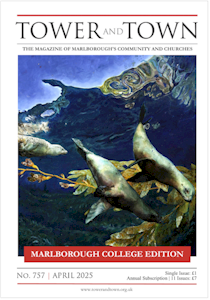

Tower and Town, April 2025 (view the full edition) (view the full edition)Editorial: Existence And ChangeThis year Marlburians have turned to ideas of existence and of change: for the former, through what makes us who we are; for the latter, through discovery and learning. The poems and first essay are connected both thematically and chronologically, stemming from events of the 1990s. In that decade the butterfly effect and chaos theory more broadly were popular areas of research and culture. The 'butterfly effect' was defined by E. N. Lorenz in The Essence of Chaos (1993) as 'The phenomenon that a small alteration in the state of a dynamical system will cause subsequent states to differ greatly from the states that would have followed without the alteration.' If that has confused rather than clarified, 'The Fluttering of a Butterfly' on page 2 may help. Two years after Lorenz's book came the novel 'Wicked' by Maguire, with its messages of staying true to one's values and being comfortable in one's own skin. Read 'Witch!' for a punchy poem inspired by the musical, which was adapted for the stage in 2003, the same year that the Human Genome Project was completed. The essay on pages 3-4 discusses the project and assesses its usefulness. The project was also one of discovery, which connects to the second collection of works. One essay celebrates 'The Greatest Invention', which I shall not reveal here - turn to pages 7-8 if you are curious. The second was written as part of a publication marking the centenary of television. The author considers the impact medical dramas such as 'Gray's Anatomy' have on real-life expectations. The artworks were similarly inspired by discovery: a child learning to read while on its mother's knee; an Apollo capsule taking exploration beyond Mother Earth. And the cover image of seals? Their eyes wide with wonder, their inquisitiveness and sense of play are qualities we share. It is also a very fine painting in its own right. Richard Sandall |